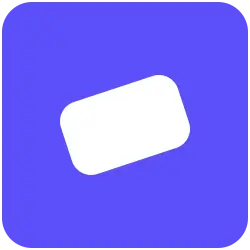
Google Web Toolkit
What is Google Web Toolkit?
Google Web Toolkit belongs to Web frameworks category.
Google Web Toolkit (GWT) is an open-source set of tools that allows web developers to create and maintain complex JavaScript front-end applications in Java. GWT emphasizes reusable, efficient solutions to recurring Ajax challenges, allowing developers to create high-performance web applications without being experts in...
Google Web Toolkit Performance Insights
1 website
Websites using Google Web Toolkit
Last 30 days uptimeⓘ
100%
Google Web Toolkit friendly technologies
Google Analytics
PWA
jQuery
Google Tag Manager
Module Federation
PHP
Cart Functionality
Cloudflare
Google Font API
Nginx
Facebook Pixel
Open Graph
Priority Hints
Bootstrap
HSTS
Webpack
core-js
Java
Top Google Web Toolkit Alternatives
Play
3 websites|0 uptime cardsPlay Framework is an open-source web application framework written in Scala and Java which follows the model-view-controller (MVC) architectural pattern. It aims to optimize developer productivity by using convention over configuration, hot code reloading, and display of errors in the browser. Play supports asynchronous programming patterns, making it suitable for building scalable, reactive applications. It integrates well with both Java and Scala ecosystems and provides features like built-in testing support, database access layers, and RESTful APIs out of the box.
ThinkPHP
5 websites|0 uptime cardsThinkPHP is an open-source PHP framework developed and maintained by the Shanghai Topthink Company. It follows the MVC (Model-View-Controller) architectural pattern and is designed to be lightweight, simple, and fast. ThinkPHP is particularly popular in China and is known for its ease of use and rapid development capabilities. It provides features like an ORM (Object-Relational Mapping) system, template engine, and various tools for common web development tasks. ThinkPHP aims to minimize configuration and maximize convention, making it easier for developers to build web applications quickly.
Yii
67 websites|0 uptime cardsYii (Yes It Is!) is a high-performance, component-based PHP framework for developing modern web applications. It implements the MVC architectural pattern and is designed to be efficient, feature-rich, and easy to extend. Yii is known for its performance optimization techniques, security measures, and extensive set of features including input validation, output filtering, and authentication. It also provides tools for rapid application development, making it popular for both small and large-scale web projects.
Adobe ColdFusion
2 websites|0 uptime cardsAdobe ColdFusion is a rapid web application development platform that uses its own scripting language, ColdFusion Markup Language (CFML). It's designed to make it easier to connect simple HTML pages to a database, allowing developers to quickly build dynamic websites and web applications. ColdFusion provides a high level of abstraction over lower-level languages and offers features like easy database integration, XML parsing, and web services consumption. It's particularly popular in enterprise environments and for building data-driven websites.
Django
55 websites|0 uptime cardsDjango is a high-level Python web framework that encourages rapid development and clean, pragmatic design. Built by experienced developers, Django takes care of much of the hassle of web development, allowing developers to focus on writing their apps without needing to reinvent the wheel. It follows the model-template-view (MTV) architectural pattern, which is similar to MVC. Django is known for its "batteries included" philosophy, providing a comprehensive set of tools and features out of the box, including an ORM, authentication system, admin interface, and more.